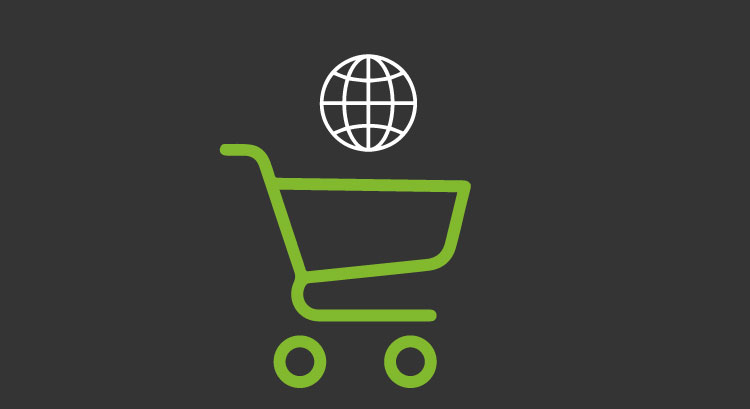The future of e-commerce: 5 ways to grow
E-commerce is skyrocketing, there is no doubt whatsoever. With unstoppable annual growth and close to 2,000 million users worldwide, e-commerce has already been able to surpass traditional commerce in some product categories and takes an important place in most of them. But what is the future of e-commerce?
Since its inception, back in the 90s, taking advantage of the Internet getting widely known, e-commerce has not stopped growing to become even more and more popular. And while growing, it has also changed the way it works and gotten more familiar for the customer. For example, who could think in the 90s that just a couple of decades later we would go shopping through a mobile phone?
During the next few years, it will keep on changing in order to increase key factors such as userfriendliness and user’s trust and loyalty. And in these changes, technology will of course play a fundamental role. How about taking a look at the future of e-commerce?
The future of e-commerce: 5 ways to grow
As we said, e-commerce forged its path based on changes and everything suggests that we will keep on bearing witness to a constant transformation in this sector for the next few years. Let’s take guesses trying to foresee some of the innovations that could be seen soon.
Integration between physical and online
Are you one of those who hate carrying bags around after going shopping? It looks like you’ll get lucky soon…
In the future, it is foreseeable that integration between virtual stores and their online versions will avoid this type of inconveniences. The Internet of Things will allow you to do your shopping easily (for example, pointing your mobile phone at the products you want to buy), without the need to carry them aroung and even avoiding to queue. It will only be necessary to have an account at the shop. You will be charged the total bill when you leave the store -which will be rather a kind of exhibition space- and you purchases will arrive shortly after at your home (perhaps by some of the interesting means that we will see below). It doesn’t get simpler than that.
New shipping ways
Did you know that some companies are already developing their own order shipping projects with drones or autonomous robots?
In the future, the current concept of shipping done by people will probably go down in history, leaving room to an army of different types of devices that will take the products you purchased to your home or workplace. Thanks to these types of technologies, shipping costs are expected to decrease, which would promote an even greater increase of e-commerce.
Virtual reality to buy as if you were in a physical store
Some online stores are already experimenting with these concepts and they are expected to experience a huge increase in the coming years.
Not surprisingly, it is one of the most anticipated functionalities for virtual reality for decades. The possibility of “going into” a virtual store as real (at least visually) as a physical store and buying stuff there without leaving your living room has been a much desired option for years. As virtual reality develops, it is to be expected that this new way of buying will become usual, contributing to the growth of a “different” type of e-commerce.
More customization
Customization in advertising, products and services is a clear trend today, but it seems like it won’t stop, on the contrary, it will even grow in the coming years.
Thanks to techniques such as Big Data, companies will analyze user behavior to suggest their products and services, which will be fully customized. For example, thanks to your mobile phone, companies whose services you have subscribed to will know your habits and even the place where you are and suggest customized purchase options. Of course, in this type of practices, security and privacy protection will be a factor to take very much into account.
Augmented reality
Although augmented reality requires interaction with a physical environment, e-commerce could also benefit from it.
Following our previous point, augmented reality devices will be able to provide information and suggest purchase options to users just by walking down the street. For example, if a user looks at a storefront in the physical world, the device could warn them that a certain product they are looking at is available online for a lower price.
Back to the present and to monitoring
And now that we’ve seen some possibilities for the future of e-commerce, how about we go back to present?
As we have already said, e-commerce is currently very relevant and represents for many companies the majority – or even the integrity – of their income. Is that your case? Do you have an online store? In that case, you may be interested in getting to know Pandora FMS.
Pandora FMS is a flexible monitoring software, capable of monitoring devices, infrastructures, applications, services and business processes.
Want to know more about what Pandora FMS has to offer you? Find out by entering here.
Or if you have to monitor more than 100 devices, you can also enjoy a FREE 30-day Pandora FMS Enterprise TRIAL. Get it here.
And remember that if you have a small number of devices to monitor you can use the OpenSource version of Pandora FMS. Find out more here.
Don’t hesitate to submit your inquiries. The Pandora FMS team will be happy to serve you!

Traductora a francés e inglés. Me encantan las lenguas. Amante de la ropa oversize, la tarta de queso y el chocolate caliente en invierno. Me gusta leer, escuchar música, viajar y explorar cosas nuevas. Mi frase más temida por aquellos que me conocen es “he estado pensando…”
Translator into French and English. I love languages. Lover of oversized clothes, cheesecake and hot chocolate in winter. I like reading, listening to music, travelling and exploring new things. My most feared phrase by those who know me is “I’ve been thinking…”

















